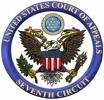Time for a Baseball Salary Cap?
 Today, sources say that the New York Yankees signed free agent first baseman Mark Teixeira to a whopping eight-year contract totaling $180 million. Teixeira is arguably the best non-pitcher free agent on the market (one could make an argument for Manny Ramirez, but it seems the market has focused more on Teixeira first). This signing comes on the heels of the Yankees signing CC Sabathia to a seven-year contract worth $161 million and A.J. Burnett to a five-year contract worth $82.5 million. Sabathia was hands-down the elite free agent pitcher, and Burnett was considered the second- or third-best free agent pitcher (depending on whether you ranked Derek Lowe above or below Burnett). That’s an extraordinary $423.5 million on three guys, all in the last month. And the Yankees got all three of them — three of the top five free agents on the market.
Today, sources say that the New York Yankees signed free agent first baseman Mark Teixeira to a whopping eight-year contract totaling $180 million. Teixeira is arguably the best non-pitcher free agent on the market (one could make an argument for Manny Ramirez, but it seems the market has focused more on Teixeira first). This signing comes on the heels of the Yankees signing CC Sabathia to a seven-year contract worth $161 million and A.J. Burnett to a five-year contract worth $82.5 million. Sabathia was hands-down the elite free agent pitcher, and Burnett was considered the second- or third-best free agent pitcher (depending on whether you ranked Derek Lowe above or below Burnett). That’s an extraordinary $423.5 million on three guys, all in the last month. And the Yankees got all three of them — three of the top five free agents on the market.
Now, just because the Yankees are spending money like drunken sailors does not mean they will win. Indeed, even with these signings, it appears that the Yankees may wind up with a smaller payroll than last year (when they failed to make the playoffs), when it stood at $222.2 million. In fact, the Yankees’ payroll may wind up south of $200 million. But this situation still strikes me as problematic for the longevity of Major League Baseball (MLB), especially in small- or mid-size markets.
It leads to a debate which may be worth revisiting: That is, should MLB adopt a salary cap?


